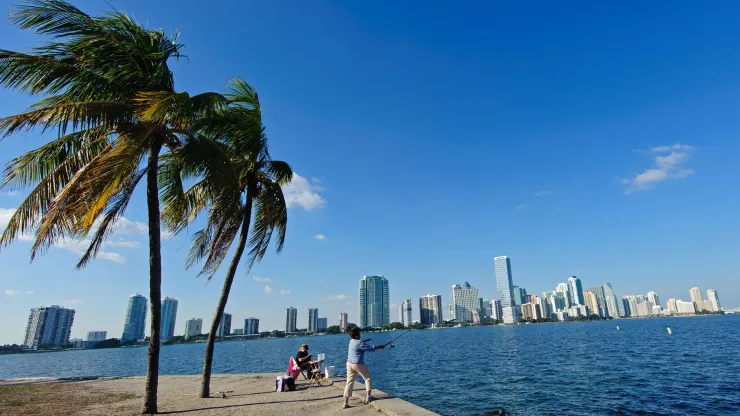The Miami area has in the past few years quickly emerged as the third soccer media hub in the United States rivaling Los Angeles and New York. For a long time, the area hosted GolTV, which was the first national 24-hour soccer network on cable and satellite TV. But following the contraction of MLS’ Fort Lauderdale-based Miami Fusion club in 2001 and a long absence of major friendlies from 2003 to 2010, the area became seen as somewhat of a soccer wasteland. But this is no longer the case.
The decision of beIN SPORTS to set up headquarters in Miami instead of New York shocked some during the summer of 2012. However, it made perfect sense because the newly spawned network wanted to attract top Latin American and European talent to the airwaves, and Miami has become a logical hub between the continents.
By basing the operation in Miami, beIN SPORTS was able to simultaneously run Spanish and English language programming, even sharing on-air talent. It also allowed the network to attract personalities coming directly from Europe for its World Cup 2014 coverage as Miami was a logical stopping off point en-route to Brazil.
A change in Miami and South Florida over recent years has been the gravitation of many elite Europeans to the area. This has made the area attractive for not only the TV networks but a proliferation of friendlies involving European club and national teams, something that was completely absent from the scene prior to 2010. In the last four years, close to a dozen high-profile European club sides have visited South Florida, as have the English and German National team in friendlies, which they hosted against Latin American opponents.
In September, the game between Brazil and Colombia at Sun Life Stadium set a record for the most attended soccer game in the history of Florida when 73,429 people watched the two World Cup teams. Increasingly, attendances to games in the area have exceeded 50,000 fans when international teams have played in the area at Sun Life Stadium, which is undergoing $400 million in renovations to make it a world-class soccer and NFL stadium.
The decision of Disney/ABC and Univision to place its Fusion TV subsidiary in Miami, including its entire soccer division, spoke volumes about the emerging media hub for the sport in South Florida. Such well known writers as Richard Farley and Zac Lee Rigg relocated to the area, while the Soccer Gods TV show, which targets millennials, has used largely local talent.
Also based in Miami is Simon Evans, one of the most respected independent soccer journalists in the country. Evans has covered both the European and domestic game as extensively as few others have based in the USA, and his wealth of experience has benefited the growth of the local soccer media.
In 2012, CONCACAF the governing body for the sport in North and Central America as well as the Caribbean, decided to relocate its headquarters from New York to Miami. With this move came increased media attention on South Florida and the ability for local independent journalists to cover more events.
Here at World Soccer Talk, we have been based in the Miami/Fort Lauderdale/West Palm Beach metropolitan area since our inception ten years ago. As more soccer opportunities, media and coverage have come to the area, we’ve developed the ability to bring even more in the way of inventive and original content to our readers such as documentaries and exclusive interviews.
Several other soccer blogs have made South Florida home including Simply Futbol and 90 Minutes Strong. In addition, the proximity to Latin America has allowed many Spanish and Portuguese language soccer websites and magazines to flourish in the area. Additionally, most major Latin American TV networks have a bureau in Miami, and those media members have taken to covering local soccer events.
And of course, Spanish-language sports heavyweights Univision and Telemundo have had their operations and headquarters respectively based in the Miami suburbs for years.
With David Beckham’s likely placing of a MLS team in the market in the near future, the soccer media landscape could grow even more.
200+ Channels With Sports & News
- Starting price: $33/mo. for fubo Latino Package
- Watch Premier League, Women’s World Cup, Euro 2024 & Gold Cup
The New Home of MLS
- Price: $14.99/mo. for MLS Season Pass
- Watch every MLS game including playoffs & Leagues Cup
Many Sports & ESPN Originals
- Price: $10.99/mo. (or get ESPN+, Hulu & Disney+ for $14.99/mo.)
- Features Bundesliga, LaLiga, Championship, & FA Cup
2,000+ soccer games per year
- Price: $5.99/mo
- Features Champions League, Serie A, Europa League & Brasileirāo
175 Premier League Games & PL TV
- Starting price: $5.99/mo. for Peacock Premium
- Watch 175 exclusive EPL games per season







